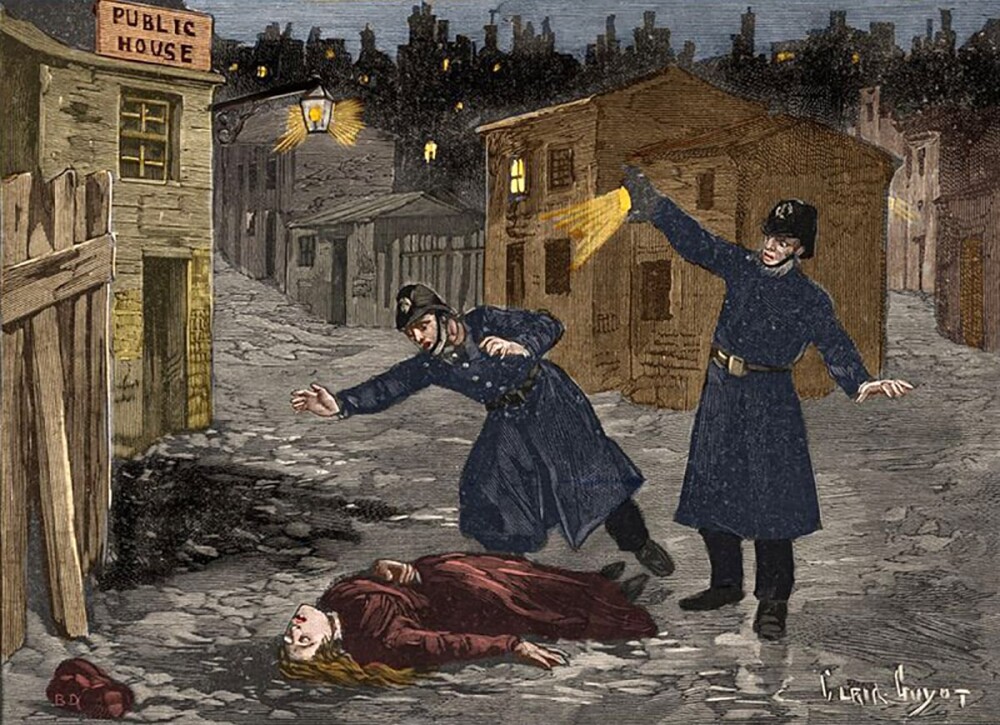The Case For 'Jack the Ripper' Being 'Jill' All Along

Drifting around town and murdering in cold blood in Victorian London isn't what someone should brag about, though brag, Jack the Ripper did in several letters sent to the London authorities.
In one letter, the killer discusses their "work" proudly, casually calling out the cops for their lack of ability in finding them, "I have laughed when they look so clever and talk about being on the right track." However, this didn't provide much evidence toward cracking the case, only that this individual had some problems and let the world know downright explicitly. Signing off as "Jack the Ripper," the figure behind the killings has never been uncovered, and many assumed a man probably did it.
Don't Miss
Though there's less talked about, less man suspect that was in the fold: a woman by the name of Mary Pearcey. Let's start off by looking at the terrifying profile pic of her below:

Public Domain
Pearcey's father had been a murderer. She was known for drinking heavily and is said to have never worked for money, believed to have hung around many rich men instead. Pearcey then started an affair with a man by the name of Frank Samuel Hogg, and the plot only thickens from here.
After the police received 600 letters from the Ripper, some strangely specific predictions were noted, for example, detailing mishaps that would occur to the next Ripper victim. In another letter received by the London cops, the Ripper boasted that after a brief pause in their career- "I love my work and want to start again." Ahh, yes, a determined, hard worker with high ambition-- imagine if only they worked in another field?

Public Domain
Yet, how does this relate to Mary Pearcey, the supposed (very lax) murderer? Well, the letters were carefully studied, and the mitochondrial DNA from on a stamp opened the possibility of a female killer. Despite this evidence not being enough, there are a few more reasons to speculate her role in this fatal play.
We know that the Ripper was cruising along murdering and disemboweling women, five to be exact, during a three-month killing spree in the Whitechapel District in 1888. According to Big Think, while there's been talk that Jack was a 23-year-old man named Aaron Kominski, "The alleged proof comes from a blood and semen-stained shawl said to have been found near the mutilated body of Jack the Ripper's fourth victim, Catherine Eddowes." This evidence has been deemed too weak to close the case, as the shawl may have never been at the scene of the crime-- perhaps they had previous encounters that are really none of our business.
As misogynistic as the crimes were, like the removal of uteruses and attack on women exclusively, this provides yet another reason why Pearcey fell under suspicion. The wounds to the organs, as they were reported, were precise enough and showed a great deal of surgical accuracy, further suggesting a woman would have held this kind of anatomical knowledge more so than a man would have in the 1800s.
Led by Frederick Abberline, the investigation also recalled a killing Pearcey had been convicted of: murdering her romantic partner's wife and child in Hampstead. Pearcey's partner Hogg had been cheating with her after all, and it is said that Hogg's wife had been seen with Pearcey moments before her murder. Like a Ripper victim, Hogg's wife was supposedly left with a head that was nearly cut all the way off.

Public Domain
Pearcey was sought by police, and while they searched Priory Street, where she lived, it was reported that she simply played popular piano tunes. The search uncovered "bloodstains in the kitchen, along with a bloodstained poker and carving knife; two broken windows in the kitchen provided signs of a struggle." When asked where the blood on the poker and knife came from, Pearcey replied, "Killing mice, killing mice, killing mice."
Though much more evidence is needed to reach a conclusion, a woman would likely have been low on the Ripper suspect list given the period. And because the slain were women, it's possible that could have given her the edge of being viewed as a future victim rather than the killer. Strange logic, but so was general existence in Victorian England, and much of that could've been of service to a female Ripper.
Top Image: The Illustrated Police News